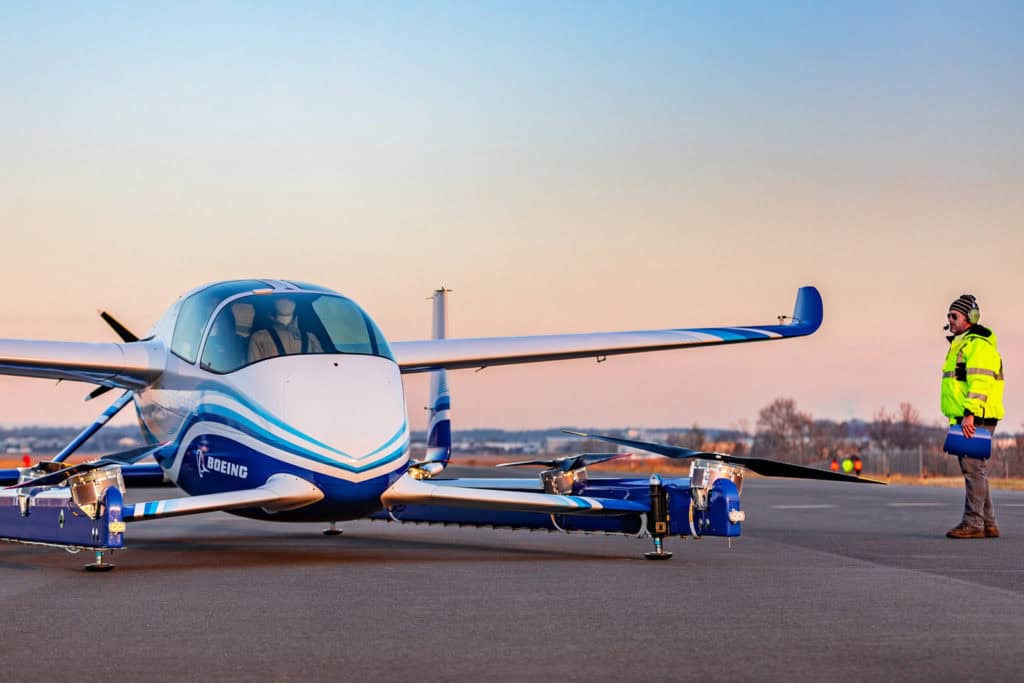
It’s a significant step toward airborne cross-town travel.
Multiple companies have outlined plans for flying taxis, but Boeing just took an important step toward making them a practical reality. The aircraft maker has completed the first test flight of its autonomous electric VTOL aircraft, verifying that the machine can take off, hover and land. It’s a modest start, to put it mildly — the taxi has yet to fly forward, let alone transition from vertical to forward flight modes. That still puts it ahead of competitors, though, and it’s no mean feat when the aircraft existed as little more than a concept roughly one year ago.
When finished, the vehicle will serve as an “urban air mobility” solution that shuttles passengers across town in situations where ground transportation would be slow or impractical, with a peak range of 50 miles. The electric powerplant isn’t just for the sake of environmental responsibility — it would ensure the aircraft is quiet enough to operate without irritating people below. There are plans for a cargo-oriented counterpart that could haul up to 500lbs of goods, and it’s poised to move from indoor to outdoor testing in 2019.
The greater challenge might be to find customers for these vehicles. Local governments have been receptive to tests, but they still have regulatory and practical hurdles to clear. Where do you place their landing pads? Where and when would these aircraft be allowed to fly? Companies have to develop flying taxis to answer at least some of these questions, though, and Boeing is at least inching forward on that front.


